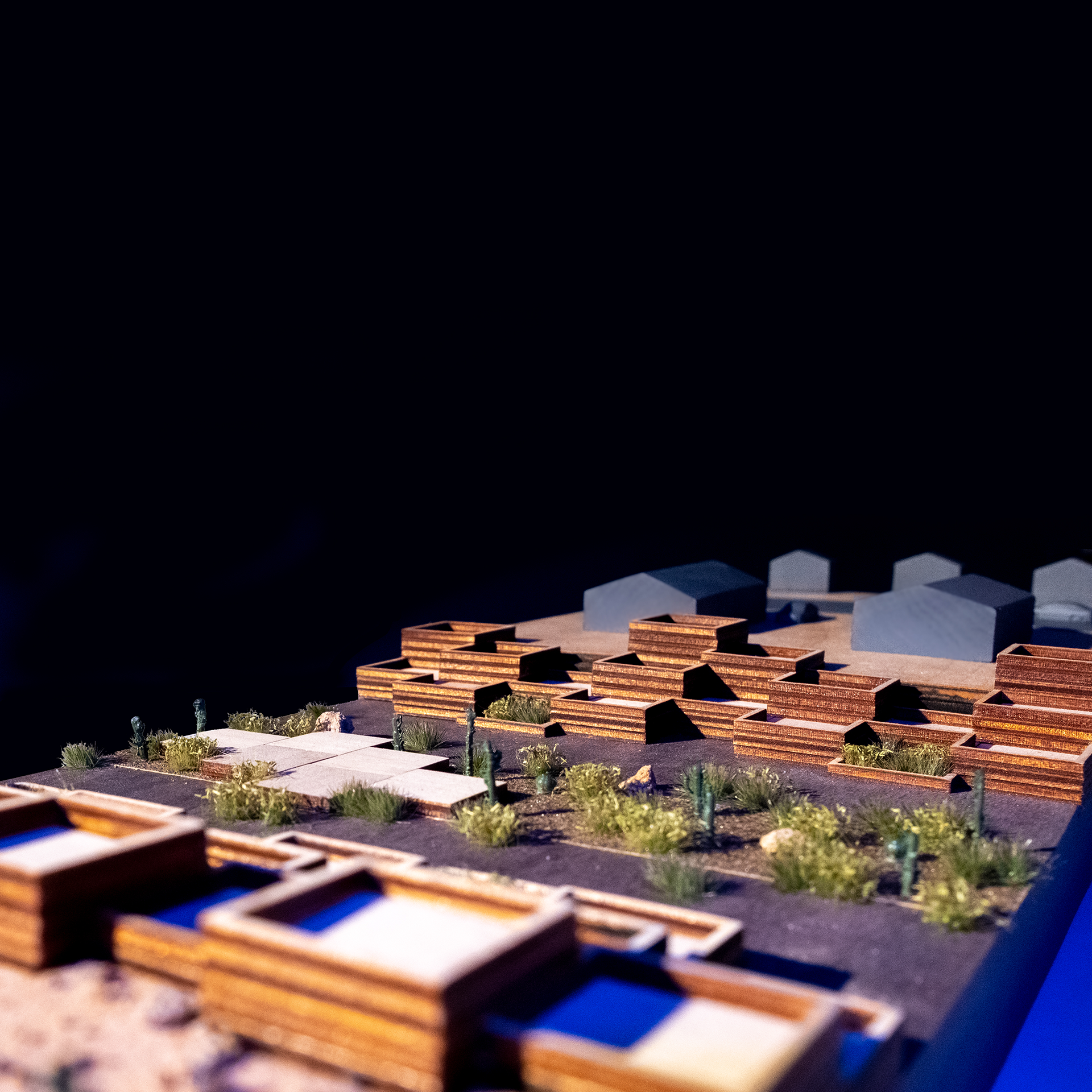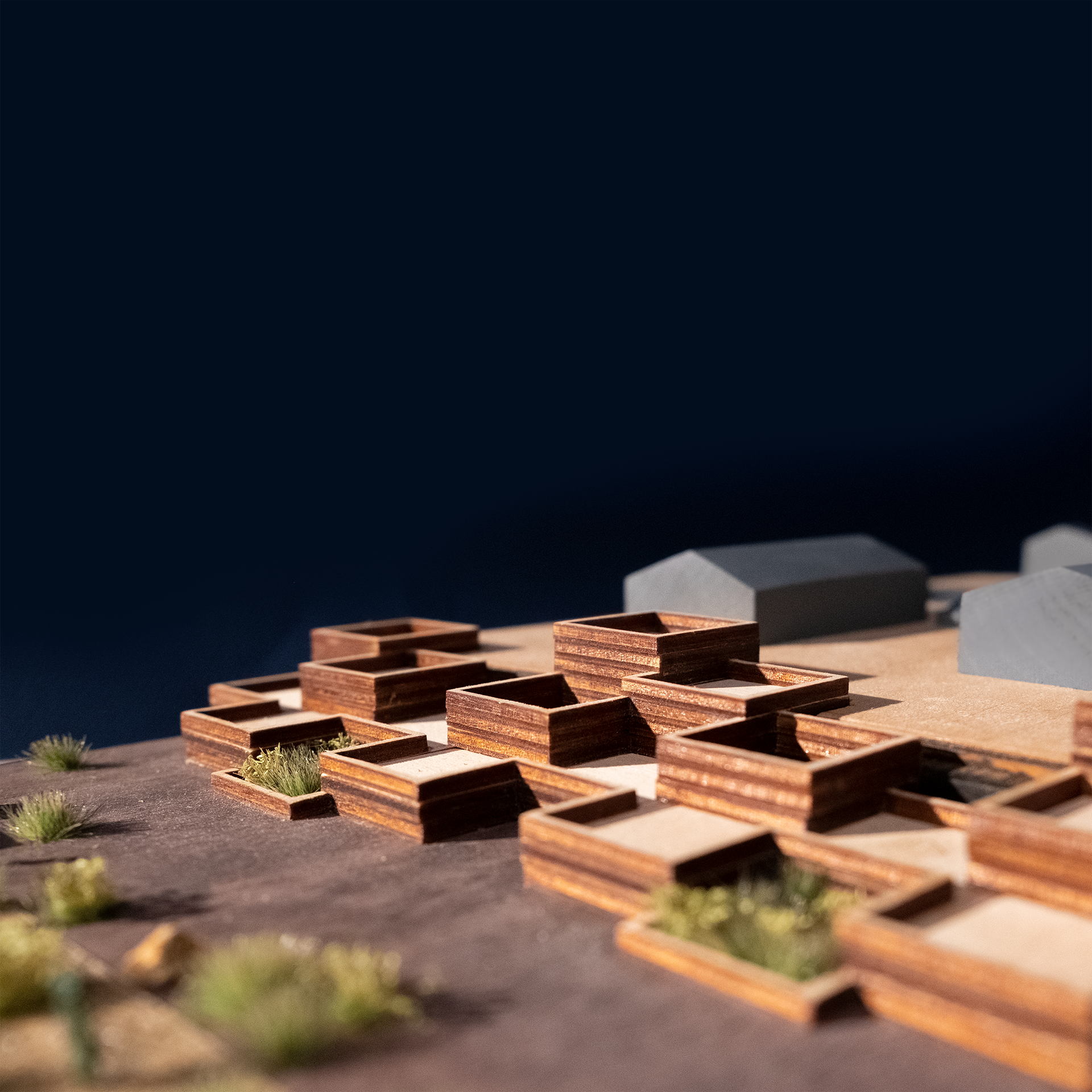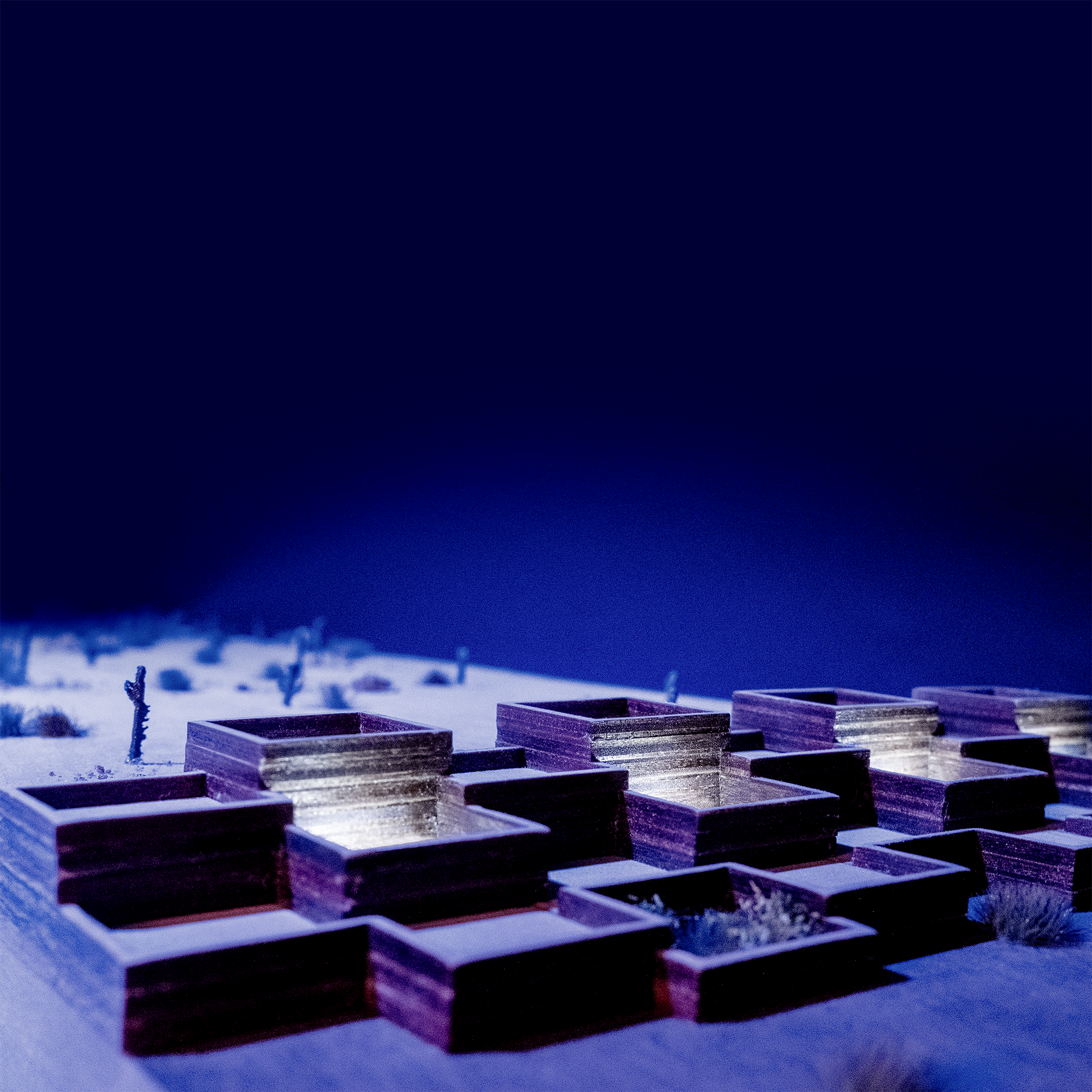The border, which defines the El Paso-Ciudad Juárez region geopolitically, is nonexistent geologically. This borderplex is a sprawling landscape of concrete residential, commercial, and industrial buildings. Modern material culture supports the colonization of the landscape with concrete boxes, treating the desert as exterior to the urban condition. Yet, even if the desert’s surface ecosystem has been destroyed, the geological basis for its existence, its soil, remains beneath the city and within its unused lands. This soil, spread across the region and on both sides of the border, is composed ideally for earthen construction and has been used as such for at least 1000 years by the Tigua Puebloan people. They built large, planned villages composed of terraced apartment-houses, intimately connected to the Earth and its topography through their material and form. In this vernacular context, inhabitable space allows its inhabitants to form a reciprocal relationship with their territory. Yet, the rapid building pace of the modern world has caused a pivot towards wasteful, harmful construction practices that place the desert and urban ecosystems at odds with one another.
This project was designed in collaboration with Andrea Rubero.
How can the construction industry shift its consumptive approach to create a future where these ecosystems are equal stakeholders in a building process that incorporates local materials and populations in its design and manufacturing? How can the earth serve as a catalyst for this operation?
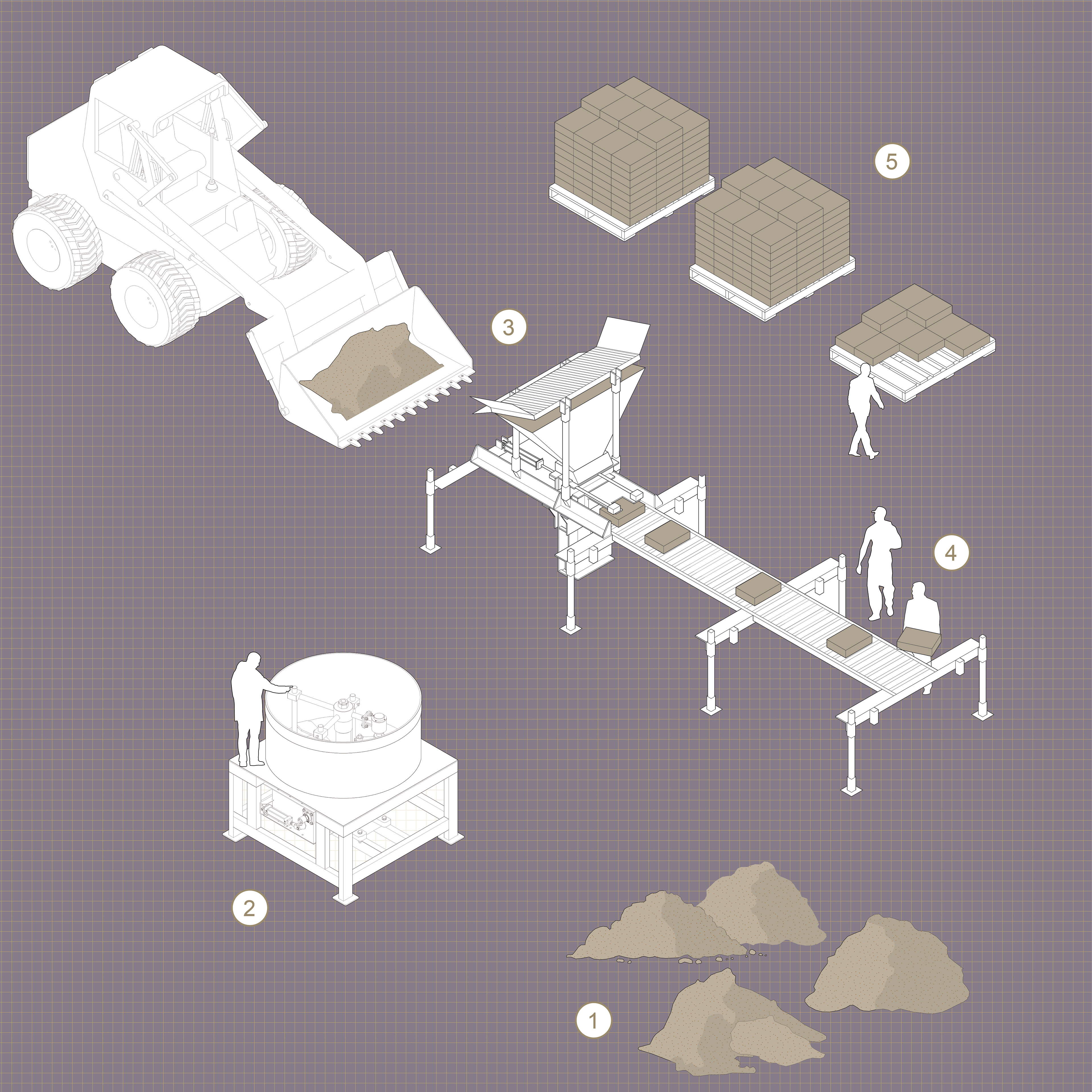
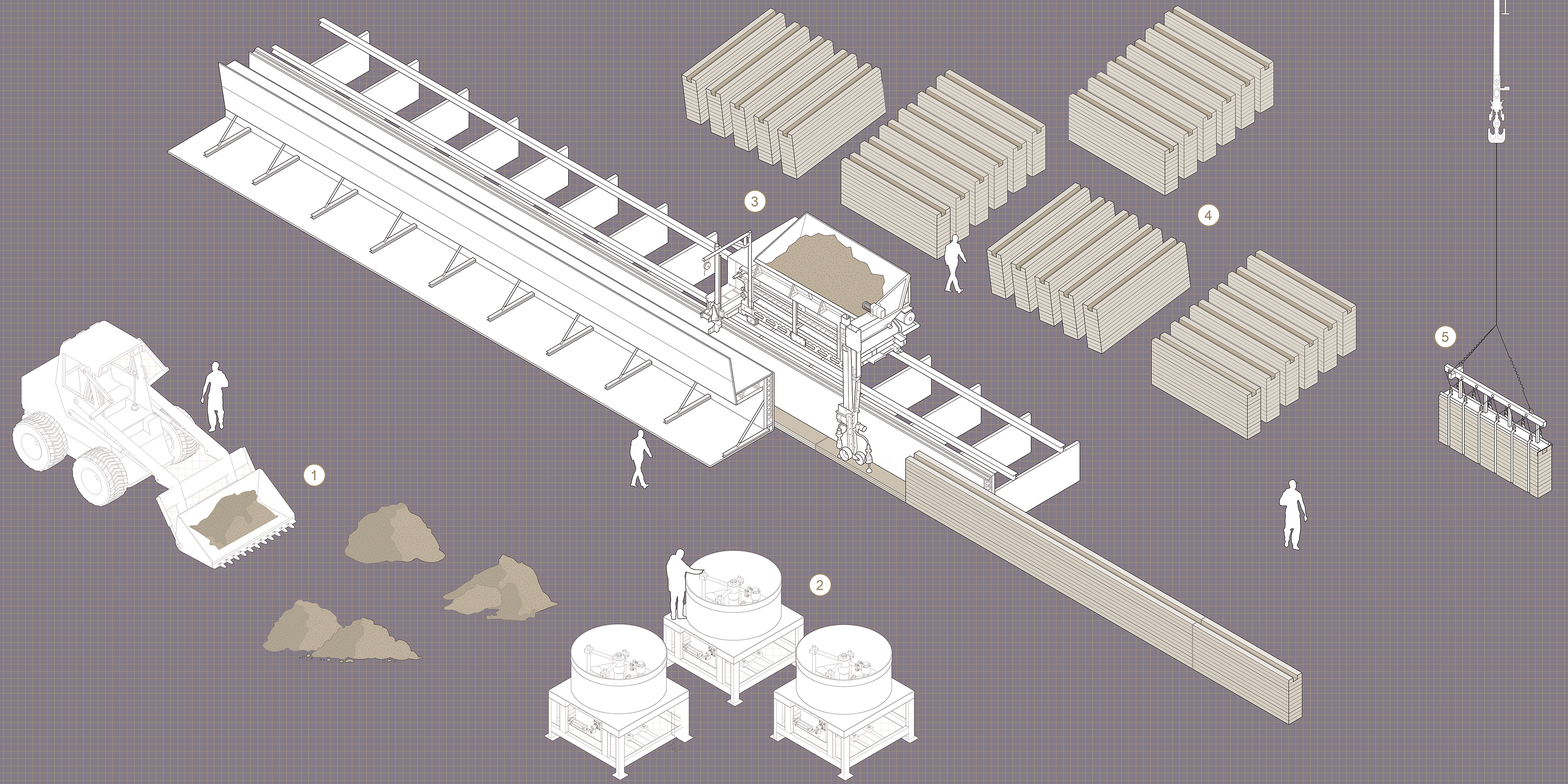
Rammed earth module (REM) and compressed earth block (CEB) are stable, durable, and healthy building materials, particularly well-suited for the Chihuahuan desert’s geological and climatic context due to the region’s abundance of naturally optimal soil with the right ratio of sand to clay and the resulting building products’ insulative properties. However, the intense and highly-specialized manual labor traditionally involved in manufacturing these products impedes their adoption as alternatives to the more established concrete construction technology that defines the urban fabric today. The mechanization of existing earthen construction techniques balances labor with technology to create an industrial ecosystem where prefabrication allows for the optimized assembly of earthen structures. CEB systems can be applied on-site with machines that rapidly fabricate blocks, which can be immediately deployed. These systems can form a hyperlocal supply chain, where excavation, processing, and building can occur on the same site, while providing the benefits of material consistency and high-quality output through mechanization and trained labor. This trained labor can be easily upscaled and applied to produce prefabricated REMs in a larger-scale industrial operation. This process implements a transportation network centered at an industrial facility containing a robot that mechanizes the intense labor of ramming earth into a formwork, yet it still allows the mechanized excavation and construction stages to occur within the same site as each other. This allows for the execution of building projects that neither add to nor remove from the earth’s crust, ultimately only shifting its form to produce inhabitable space within a new topography.
As an urban thesis, this project proposes that this operation occurs along a corridor that re-introduces the desert ecosystem into the urban ecosystem of the borderplex, mingling it with collective housing schemes and outdoor public space constructed using earth. Starting from the desert at the urban edge on either side of the border and moving inward towards the Zaragoza International Bridge, a series of empty parcels of land are strung together into one site. A grid system comprising two urban-scale lattices is superimposed across the entire site, allowing for a directionality to emerge that is imagined to allow both humans and nonhumans to transit the length of the corridor. A bar strategy arises out of the grid system, composed of 50-meter-wide bars spaced 100 meters apart. Many of these bars are left unexcavated to allow the desert ecosystem to thrive, but on some, excavation occurs, and the implementation of earthen construction follows. The simple operations of subtraction, alteration, and addition take place through the excavation of earth, the processing and prefabrication of earthen construction elements, and the use of those elements to produce inhabitable space, respectively. The edges of the sunken extraction sites become the sites for these inhabitable spaces, while the floors of the extraction sites become a new ground where the atmosphere allows for a lush desert landscape to be planted and comfortably inhabited. These operations produce a materially neutral system: they only metabolize the desert, upscaling its landscape and introducing new topographical grounds and boundaries that form re-negotiation between the desert and the city, allowing both to inhabit the same territory and thrive within it. The human and non-human habitats provided by the project reconnect the territory across the border, allowing for the free movement of flora and fauna through the desert, unrestricted by the urban fabric.
The earthen construction zones along the edge condition of the excavations manifest programmatically as collective housing. The small dwelling units organize themselves systematically around common enclosed and unenclosed spaces that take shape as public terraces and semi-private courtyards. This entire intervention takes place below the existing ground plane, allowing for the excavation floor and the dwellings themselves to maintain an important relationship with the horizon. This ensures that the experience of being within the project is distinct within its urban context. A subtractive operation allows for the aggregation to form a relationship with the surrounding context, promoting positive integration between the context and the desert while preventing the continuation of suburbia’s encroachment on the desert ecosystem.
The usage of bars at the urban scale is temporally strategic in that it allows for outward expansion beyond the current site edges and into the urban landscape as its current iteration ceases to be useful. Additionally, the current plan proposal delineates bars that are not excavated in the first phase of the proposal but which could become excavation sites if needed in the future. In the longer term, the proposal takes advantage of the tendency of earth and earthen structures to erode: the inhabitable spaces can be allowed to return to the earth and once again become fully part of the desert ecosystem if they are someday no longer needed. Although this erosion can be prevented while these spaces are inhabited through maintenance, the dissolution of human space once it is no longer needed is essential for the desert to continue to reclaim and recolonize the territory.




